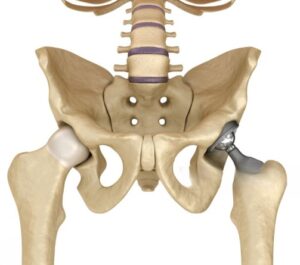
Bilateral Hip Replacement Surgery: Overview and Options
Understanding Bilateral Hip Replacement
Bilateral hip replacement surgery is a procedure where both hips are replaced due to severe damage, often caused by conditions like osteoarthritis. Estimates suggest that about 42% of people with osteoarthrosis may experience bilateral hip disorders. Furthermore, 25% of individuals with osteoarthritis requiring total hip replacements may need bilateral replacements. This has led to the exploration of optimal methods for performing hip replacements while minimizing perioperative complications. The two primary approaches are simultaneous bilateral hip replacement and sequential bilateral hip replacement.
Types of Bilateral Hip Replacement
- Simultaneous Bilateral Hip Replacement: This approach involves replacing both hips in a single surgical session. It allows for a unified recovery process but may increase the complexity of the surgery.
- Staged Bilateral Hip Replacement: In this method, each hip is replaced in separate procedures, usually spaced several months apart. This approach may reduce the risk of complications but requires two separate recoveries.
- Hip Resurfacing: This technique involves resurfacing the ball and socket of the hip joint rather than fully replacing it. Hip resurfacing generally carries a lower risk of dislocation and may enable a quicker return to high-intensity physical activities.
- Minimally Invasive Total Hip Replacement: This method uses smaller incisions to reduce trauma to surrounding tissues. It often results in fewer postoperative problems and a shorter recovery period.
Diagnosis Leading to Hip Replacement
Hip replacement surgery is often indicated for:
- Osteoarthritis: Also known as wear-and-tear arthritis, this condition involves the deterioration of the smooth surface of the bone, leading to painful bone-to-bone contact.
- Rheumatoid Arthritis: An autoimmune disease that inflames the synovial membrane, causing excessive fluid production and damage to the articular cartilage.
- Injury: Severe damage to the articular cartilage from fractures or other injuries can necessitate replacement.
- Avascular Necrosis: Insufficient blood supply to the hip joint’s ball can cause the bone to collapse and change shape.
- Developmental Dysplasia: Hip dislocation due to abnormalities present at birth.
Pre-Surgery Testing
Before undergoing hip replacement surgery, several evaluations are performed:
- Medical History: A detailed review of past and current medical conditions to assess the severity of pain and need for surgery.
- Physical Examination: Evaluates joint movement and stability.
- Imaging: X-rays and MRIs help assess the extent of damage to bones and soft tissues.
Signs Indicating the Need for Hip Replacement
Hip replacement is considered when conservative treatments like medication and physical therapy fail. Key signs include:
- Persistent, debilitating pain
- Limited range of motion
- Difficulty performing routine activities
- Challenges standing up from a seated position
Bilateral hip replacement can significantly improve quality of life for those suffering from severe hip joint damage, providing relief from chronic pain and enhancing mobility.




